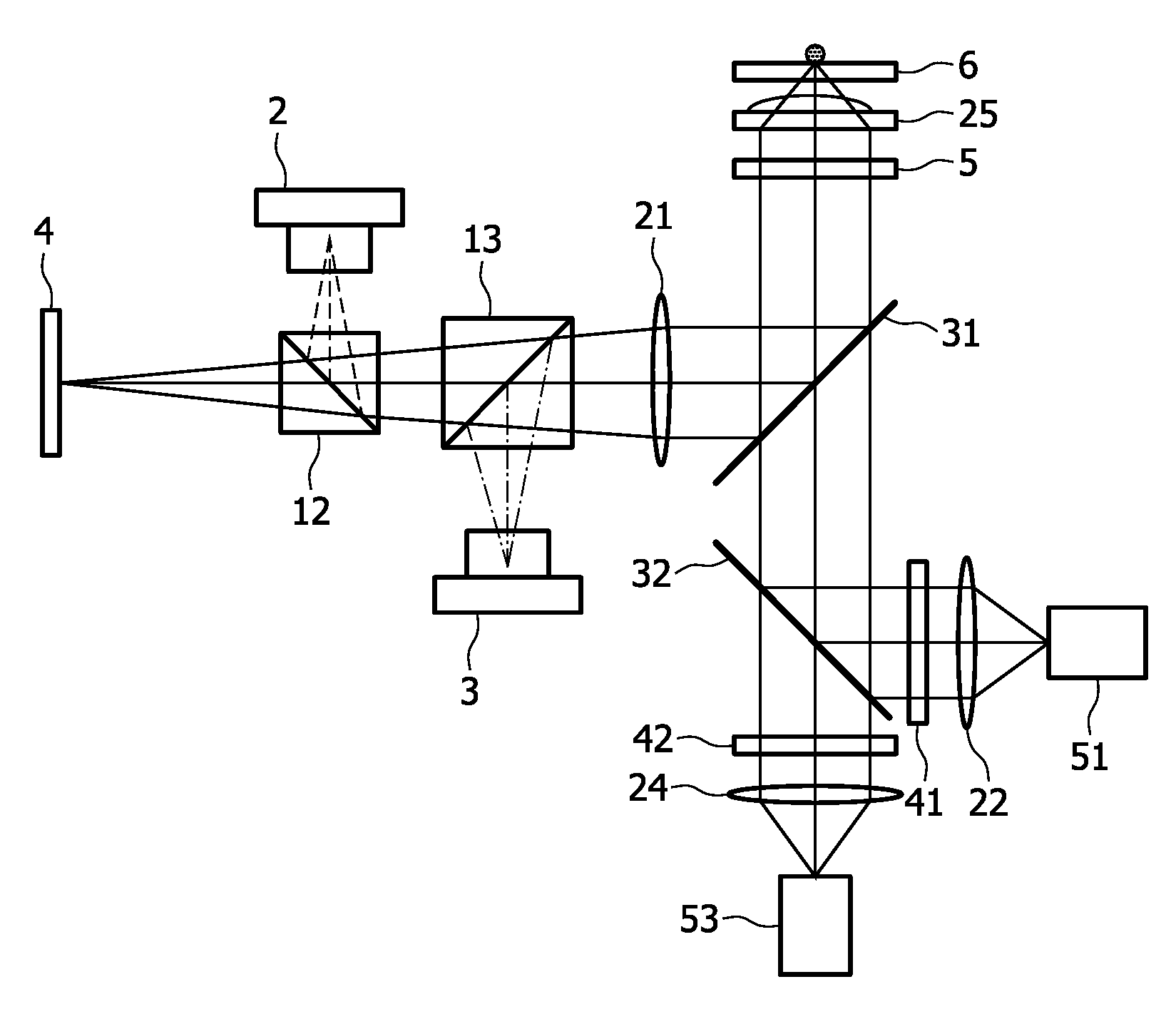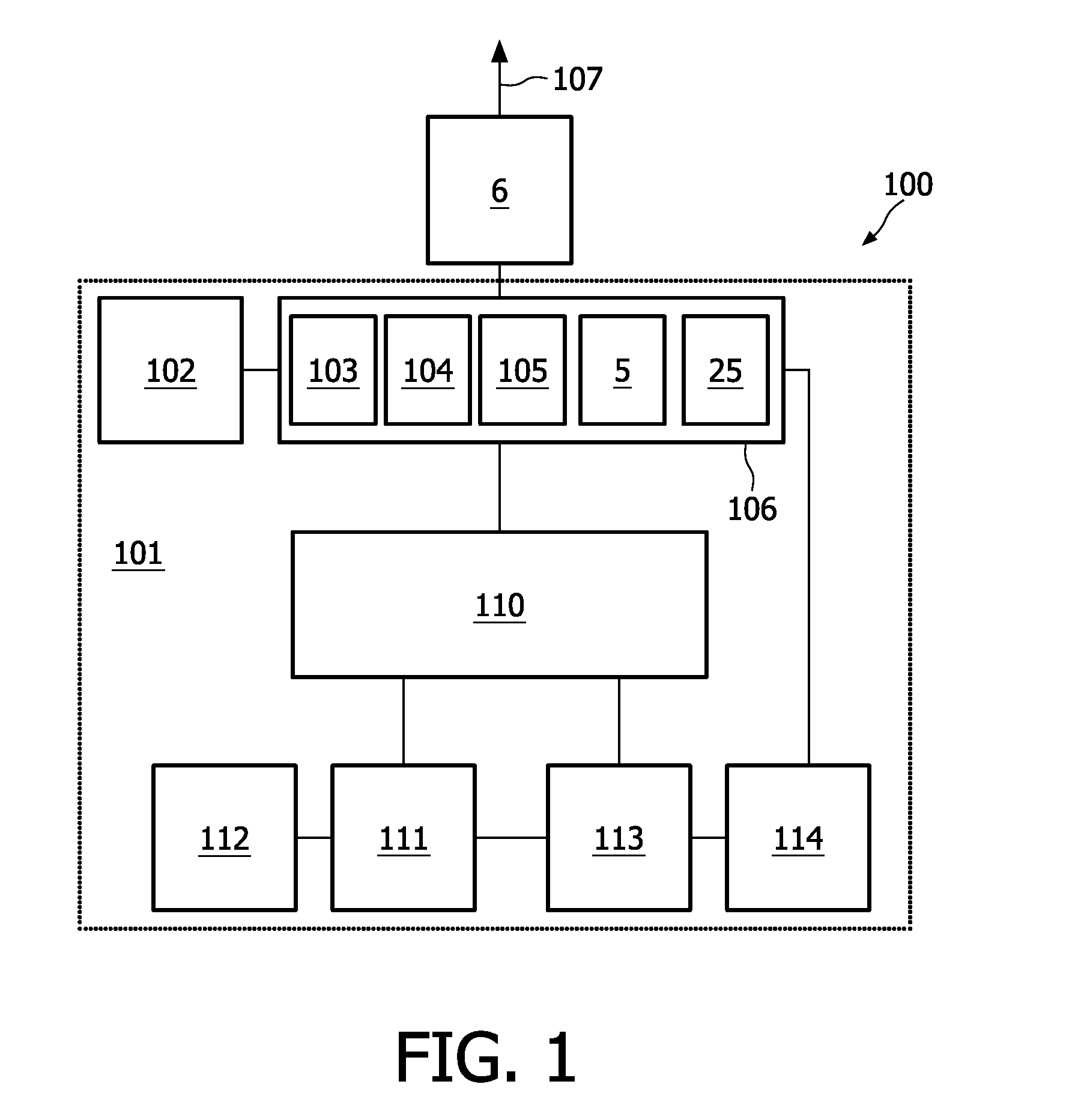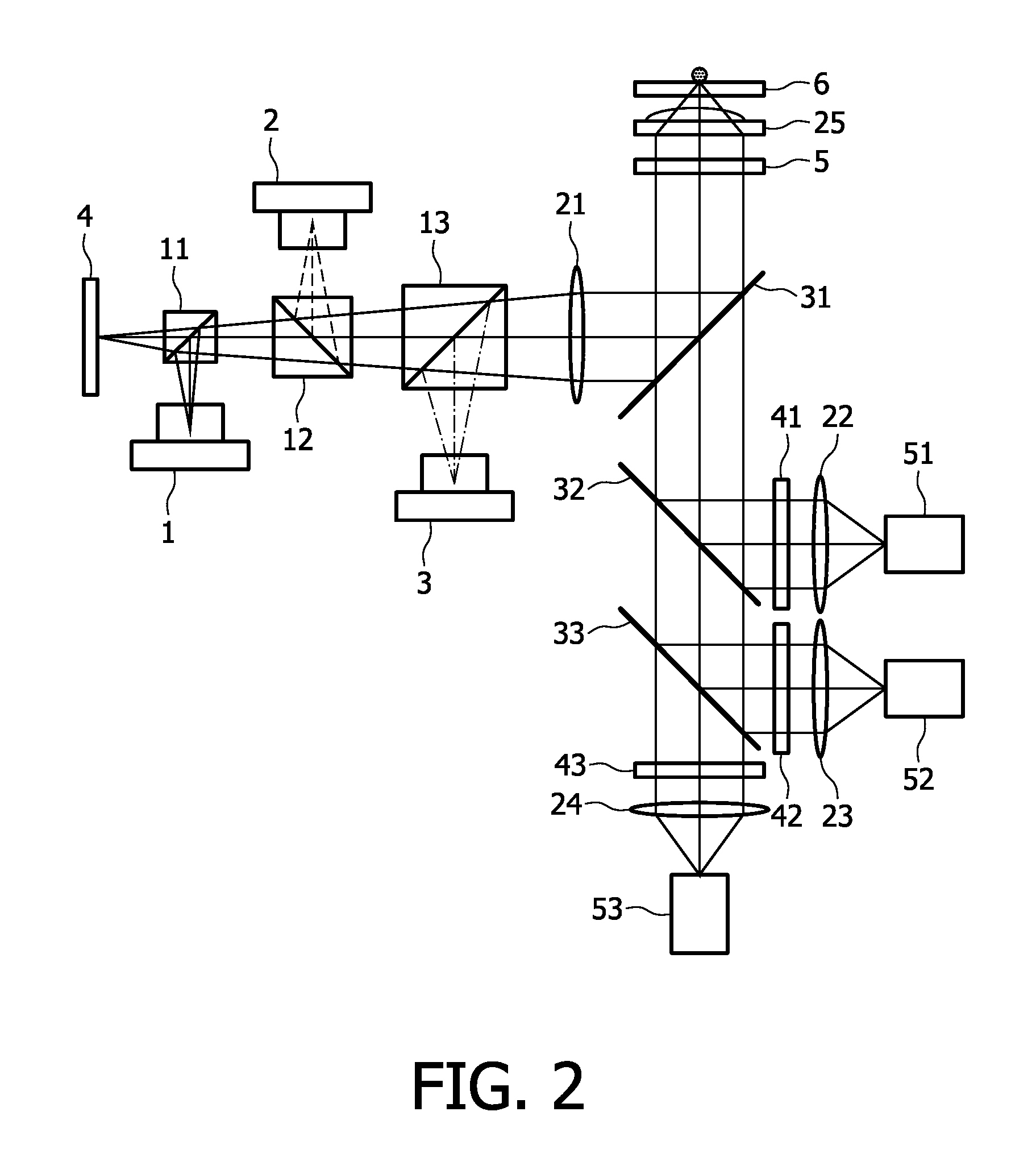Multi-color biosensor
a biosensor and multi-color technology, applied in the field of optical detection, can solve the problems of difficult to find, difficult to realize, and difficult to realize, and achieve the effects of reducing the overall analysis time, cost-effective production, and robust detection system
- Summary
- Abstract
- Description
- Claims
- Application Information
AI Technical Summary
Benefits of technology
Problems solved by technology
Method used
Image
Examples
second embodiment
[0059]A second embodiment according to the first aspect of the present invention relates to a detection system as described above, wherein only a single excitation irradiation beam is used, but wherein the optical element 25, e.g. refractive element, used for focusing the single excitation irradiation beam on the substrate is also used for collecting at least one luminescence irradiation beam having a different wavelength than the excitation irradiation beam. The detection system thereby comprises an optical compensator for adjusting at least one of the excitation irradiation beam or the luminescence irradiation beam(s) for optical aberrations induced by the optical element, e.g. refractive element. The second embodiment will be illustrated using an example, the invention not being limited thereto. According to an exemplary detection system as shown in FIG. 5, a single excitation irradiation beam is used to excite the sample 6 and at least one, e.g. two different luminescence irrad...
PUM
 Login to View More
Login to View More Abstract
Description
Claims
Application Information
 Login to View More
Login to View More - R&D
- Intellectual Property
- Life Sciences
- Materials
- Tech Scout
- Unparalleled Data Quality
- Higher Quality Content
- 60% Fewer Hallucinations
Browse by: Latest US Patents, China's latest patents, Technical Efficacy Thesaurus, Application Domain, Technology Topic, Popular Technical Reports.
© 2025 PatSnap. All rights reserved.Legal|Privacy policy|Modern Slavery Act Transparency Statement|Sitemap|About US| Contact US: help@patsnap.com



